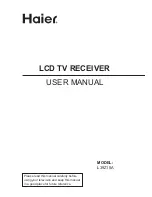
SeeGull
®
HB
flex
TM
Reference Manual
PCTEL, Inc.
Page 11
Rev F
package with the scanner that enables
spectrum analysis of the wide band
capability of the scanner. The Spectrum
Analyzer shows a wealth of information
about the signal spectrum that is not
obtainable from the standard channel power
measurement. The Spectrum Analyzer
measures and reports power spectral
density using frequency domain techniques
(a segmented FFT approach that ensures
various resolution bandwidths and fast
update rates), whereas RSSI
measurements use analog and digital filters
to select the right frequency band and
subsequently measure total power.
One advantage of this approach is that the
Spectrum Analyzer can analyze the fast-
changing spectrum of an unstable
transmitter. The RSSI measurement in this
case will most often show a normal smooth
picture, as it averages a limited set of data
over time. The Spectrum Analyzer,
however, if used with an appropriate
resolution bandwidth, will reveal erratic
signal behavior due to its fast update rate
and non-averaged data.
The user may set the resolution bandwidth
to 5, 10, 20, 40, 80 or 160 kHz or 2, 4, or 8
MHz. Output data may be set to an average
of 1, 2, 4, 8, or 16 sweeps.
LTE Power Analysis (OP616)
LTE Power Analysis is available for TD-LTE
and provides power of the resource block
and slot of the TD-LTE frame. This enables
users to identify interference that is time
(slots) or frequency (RBs)-selective, to
obtain a snapshot of overall traffic levels,
and to determine whether the base station
is properly using the available resources.
Layer 3
OP615 - All Technologies (GSM, WCDMA,
CDMA, EVDO, TD-LTE, FD-LTE)
Layer 3 decoding is available for FD-LTE,
TD-LTE, FD-LTE-NB-IOT, GSM, WCDMA
and CDMA technologies. This option
provides decoding for:
•
GSM BCCH (Broadcast Control
Channel) messages
•
WCDMA BCH (Broadcast Control
Channel) Type 3 messages
In the GSM BCCH, types 1, 2, 3, 4, 9, and
type 13 messages are supported. For
WCDMA, and LTE, transport block from the
scanner enable support of the Master
Information Block (MIB) and System
Information Blocks (SIBs).
In the WCDMA BCH, the MIB and SIBs 1, 2,
3, 5, 7, 11 and 19 are available.
In the GSM BCCH, WCDMA, these
messages contain the Cell Identity and
Local Area Identification information
broadcast by the network infrastructure.
This information includes the:
•
MCC (Mobile Country Code),
•
MNC (Mobile Network Code),
•
LAC (Location Area Code)
•
RAC (Routing Area Code)
These messages also contain significant
information on the configuration, activity and
performance of the network. This includes
information concerning:
•
Neighbor list
•
Mobility management (handovers,
etc.)
•
Group and broadcast call control
•
GPRS mobility management,
transparent transport and session
management












































